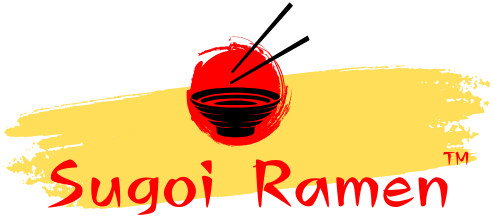In today’s evolving food service landscape, entrepreneurs often weigh the benefits of launching a Cloud Kitchen Compared to a Traditional Restaurant. While traditional restaurants offer the charm of dine-in experiences, cloud kitchens are redefining the industry by focusing on delivery-first models. This approach brings unparalleled advantages, such as cost savings, operational flexibility, and the ability to meet modern consumer demands efficiently. By eliminating the need for expansive dine-in spaces, cloud kitchens streamline operations and cater to the growing online food delivery market, making them a forward-thinking choice for food entrepreneurs.
1. Lower Setup and Operational Costs

Launching a traditional restaurant often involves substantial investments in location, décor, dining areas, and staff. In contrast, cloud kitchens require significantly lower setup and operational expenses, making them ideal for entrepreneurs on a budget.
- No Expensive Real Estate Costs: Cloud kitchens operate without customer-facing spaces, reducing the need for premium locations and lowering rental costs.
- Reduced Staffing Requirements: Without waitstaff or hosts, labor costs decrease significantly.
- Streamlined Equipment Needs: Unlike traditional restaurants, cloud kitchens focus solely on food preparation, eliminating the need for decorative furniture or dining utensils.
This cost efficiency allows business owners to allocate resources toward quality ingredients, advanced kitchen equipment, and digital marketing.
2. Wider Market Reach Through Delivery Platforms
Cloud kitchens thrive by partnering with popular food delivery platforms like Swiggy, Zomato, and Uber Eats. This collaboration grants businesses access to a vast customer base, far beyond what a traditional restaurant’s location could achieve.
- Target Diverse Customer Segments: Delivery platforms enable cloud kitchens to serve urban professionals, families, and students alike.
- Expand Without Physical Boundaries: Unlike brick-and-mortar restaurants, cloud kitchens can cater to multiple neighborhoods without setting up additional outlets.
- Optimize Marketing Through Data Analytics: Delivery platforms provide detailed insights into consumer preferences, helping businesses tailor their menus and promotions effectively.
With the growing popularity of online food delivery, this advantage positions cloud kitchens as a preferred choice for modern diners.
3. Enhanced Scalability and Flexibility
Scaling a traditional restaurant is often a costly and time-consuming process. Cloud kitchens, on the other hand, offer unparalleled scalability and operational flexibility.
- Easily Launch New Brands: Entrepreneurs can experiment with multiple cuisines and virtual brands under one roof without additional infrastructure.
- Adapt Quickly to Trends: Cloud kitchens can swiftly pivot their menu offerings to match consumer trends, such as vegan meals, keto-friendly dishes, or fusion cuisines.
- Expand to New Areas Seamlessly: With delivery as the primary mode of operation, cloud kitchens can quickly extend their services to new regions.
This agility ensures businesses can grow sustainably while responding to the ever-changing preferences of their target audience.
4. Optimized for Technology Integration

Cloud kitchens leverage cutting-edge technology to streamline operations and enhance customer experiences.
- Advanced Kitchen Management Systems: Integrated software helps track orders, manage inventory, and monitor food preparation processes.
- AI-Powered Analytics: Predictive analytics tools optimize menu pricing, forecast demand, and reduce waste.
- Automated Marketing Solutions: Technology-driven marketing platforms enable personalized promotions and loyalty programs.
These innovations improve efficiency, reduce errors, and ensure a seamless dining experience for customers.
5. Minimal Risk and Higher Profit Margins
By eliminating the overhead costs associated with traditional restaurants, cloud kitchens significantly reduce the financial risks for food entrepreneurs. The lean operational model also results in higher profit margins.
- Lower Fixed Costs: Expenses such as rent, utilities, and maintenance are significantly reduced in cloud kitchens.
- Flexible Commitments: Entrepreneurs can lease shared kitchen spaces or opt for pay-as-you-go models, minimizing long-term financial commitments.
- Increased ROI: With reduced expenses and expanded customer reach, cloud kitchens generate higher returns on investment compared to traditional setups.
This risk-averse approach empowers new business owners to test their ideas without fear of substantial financial losses.
6. Environmentally Sustainable Practices
Cloud kitchens have the potential to implement eco-friendly initiatives more effectively than traditional restaurants.
- Reduced Food Waste: Data-driven demand forecasting helps minimize overproduction, leading to lower food waste.
- Sustainable Packaging Options: Many cloud kitchens use biodegradable or recyclable packaging to reduce their environmental impact.
- Lower Carbon Footprint: With no dine-in areas and optimized delivery routes, cloud kitchens significantly reduce energy consumption and emissions.
As sustainability becomes a key concern for consumers, adopting green practices gives cloud kitchens a competitive edge.
Conclusion
The rise of cloud kitchens represents a transformative shift in the food service industry. With their cost efficiency, technological integration, and market adaptability, cloud kitchens offer a future-proof solution for aspiring food entrepreneurs. By prioritizing delivery and leveraging innovative tools, cloud kitchens can deliver exceptional culinary experiences while maintaining profitability and flexibility.
Starting a cloud kitchen provides numerous opportunities to tap into the booming food delivery market, catering to modern lifestyles and consumer expectations. For entrepreneurs seeking a low-risk, high-reward business model, the advantages of cloud kitchens over traditional restaurants are undeniable.
FAQs
Q1. What is the main difference between a cloud kitchen and a traditional restaurant?
A cloud kitchen focuses on food preparation for delivery-only services, eliminating dine-in spaces, while a traditional restaurant serves customers on-site.
Q2. Are cloud kitchens profitable compared to traditional restaurants?
Yes, cloud kitchens often generate higher profit margins due to lower setup and operational costs, coupled with broader market reach through delivery platforms.
Q3. What technologies do cloud kitchens use to improve operations?
Cloud kitchens employ tools like kitchen management software, AI-powered analytics, and automated marketing platforms to enhance efficiency and customer satisfaction.
Q4. Can cloud kitchens implement sustainable practices effectively?
Absolutely. Cloud kitchens can minimize food waste, use eco-friendly packaging, and reduce their carbon footprint by optimizing delivery processes.
Q5. How do cloud kitchens scale their operations?
Cloud kitchens can launch multiple virtual brands, adapt menus to consumer trends, and expand delivery areas without significant infrastructure investments.







